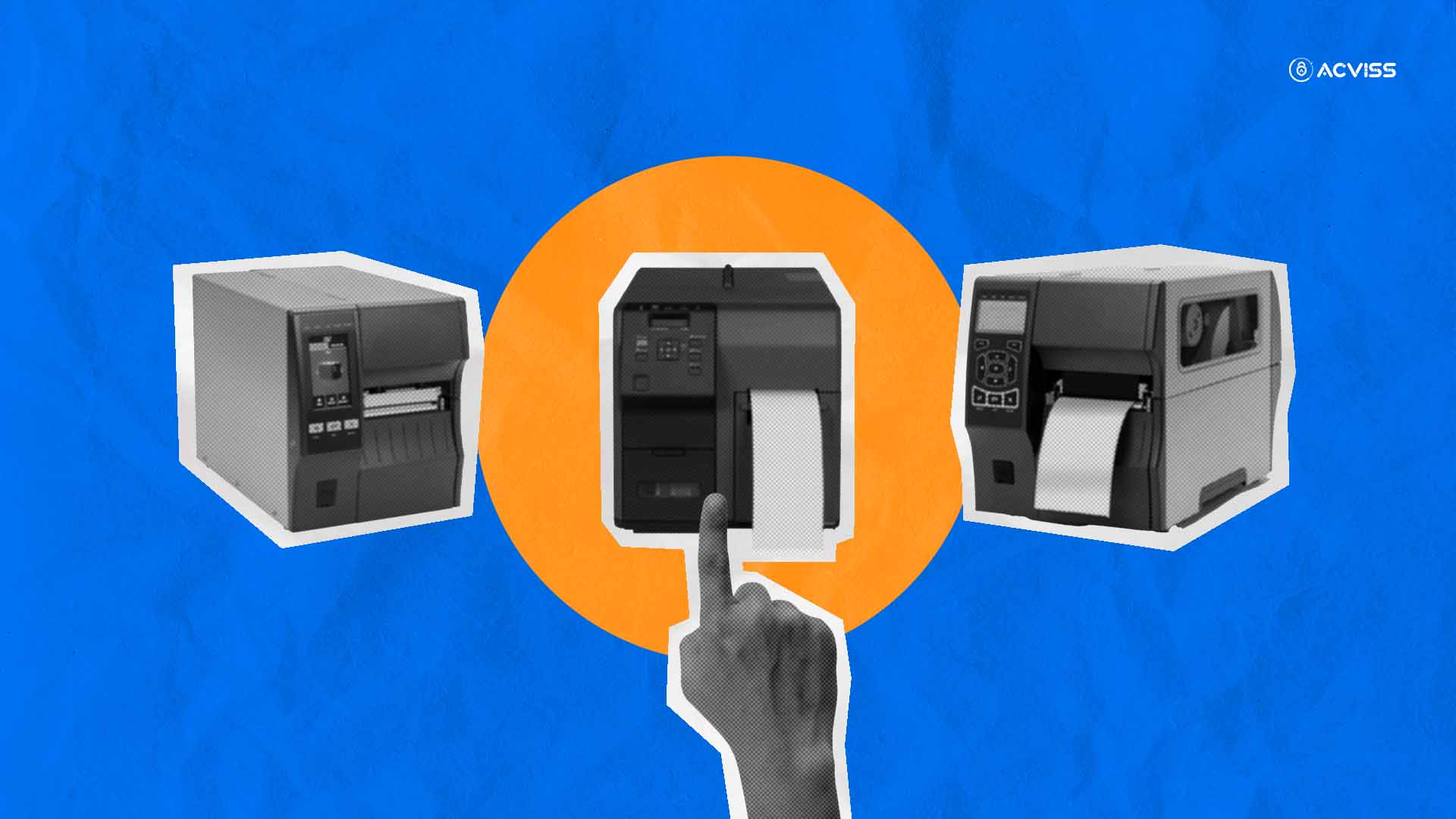Choosing the Right Variable Data Printer for Your Industry

Variable Data Printing (VDP) has become an essential component in industries requiring unique identification, traceability, and anti-counterfeiting measures. Businesses leveraging VDP to print QR codes, barcodes, serial numbers, and authentication markers on their products, from pharmaceuticals to FMCG, agrochemicals, and electronics.
But how do you choose the right Variable Data Printer (VDP) for your industry? This blog explores the key factors, printer types, and best practices to ensure you make the right investment.
Understanding Variable Data Printing (VDP)
Variable Data Printing is a digital printing technique that allows for unique, customisable information to be printed on each label or package.
This enables:
✔ Product Authentication – Unique QR codes for brand protection.
✔ Track & Trace – Real-time supply chain tracking.
✔ Regulatory Compliance – Meeting industry-specific labelling requirements.
✔ Customer Engagement – Personalisation via enhanced product serialisation.

Types of Variable Data Printers & Their Applications
Different industries have different printing needs. Here’s an overview of major VDP technologies and their best applications
1. Thermal Inkjet Printers (TIJ)
Best for: High-quality, small-scale applications.
Ideal for industries: Pharmaceuticals, FMCG, Food & Beverage
Materials Supported: Paper, Cardboard, Flexible Packaging, Foil
✅ Advantages
- High-resolution (up to 600 dpi)
- No moving parts, low maintenance
- Fast drying ink
❌ Disadvantages
- Ink can be expensive
- Not suitable for high-speed industrial production
2. Continuous Inkjet Printers (CIJ)
Best for: Fast, high-speed industrial printing
Ideal for industries: FMCG, Electronics, Pharmaceuticals, Beverage Industry
Materials Supported: Glass, Metal, Plastic, Flexible Packaging
✅ Advantages
- Can print on curved or uneven surfaces
- High-speed printing (up to 1000 products per minute)
- Resistant to water and solvents
❌ Disadvantages
- Requires regular maintenance
- Continuous ink flow leads to waste
3. Laser Marking Printers
Best for: Permanent marking & anti-counterfeiting
Ideal for industries: Electronics, Automotive, Pharmaceuticals
Materials Supported: Metal, Plastic, Glass, Rubber
✅ Advantages:
- No ink required (low operating cost)
- Tamper-proof, permanent marks
- High-speed, high-precision printing
❌ Disadvantages:
- Expensive initial investment
- Cannot print on flexible packaging
4. Thermal Transfer Over printers (TTO)
Best for: Flexible packaging, labels, food packaging
Ideal for industries: Food & Beverage, Cosmetics, Pharmaceuticals
Materials Supported: Pouches, Sachets, Cartons, Plastic Film
✅ Advantages:
- Smudge-free, high-quality prints
- Compatible with different ribbon types
- Good for low and high-speed printing
❌ Disadvantages:
- Ribbon replacement costs add up
- Slower than CIJ for high-volume printing
5. Drop-On-Demand (DOD) Inkjet Printers
Best for: Large character printing on industrial materials
Ideal for industries: Warehouse, Shipping, Logistics, Construction
Materials Supported: Wood, Concrete, Metal, Cartons
✅ Advantages:
- Can print large texts, symbols, barcodes
- Low ink wastage compared to CIJ
- Ideal for warehouse & heavy-duty packaging
❌ Disadvantages:
- Not suitable for high-resolution QR codes
- Slower print speeds than CIJ
EAN-13 Barcode Registration: A Complete Guide for Manufacturers and Brands
Key Considerations When Choosing a VDP Printer
Before selecting a VDP printer, consider the following:
1. Industry-Specific Needs
- Pharmaceuticals: Requires serialisation, regulatory compliance, and tamper-proof labels.
- FMCG: Needs fast, cost-effective labelling on multiple surfaces.
- Electronics: Demands permanent, high-precision laser marking.
2. Print Resolution & Clarity
- For small QR codes & barcodes, choose a printer with 300–600 dpi resolution.
- For simple serial numbers, lower dpi can work.
3. Production Line Speed
- CIJ & Laser Marking: Suitable for fast production lines.
- TTO & TIJ: Good for small to medium-scale production.
4. Ink & Consumable Costs
- Laser Marking = Zero ink costs and high investment.
- CIJ & TIJ = Ink-dependent, but versatile.
5. Software Integration
- Ensure the printer supports ERP & Track & Trace systems for real-time tracking.
Industry-Specific Applications of VDP
📌 Pharmaceuticals – Serialisation for anti-counterfeiting and regulatory compliance.
📌 FMCG & Food – Date coding, batch numbers, and smart packaging.
📌 Agrochemicals – Unique identifiers for traceability and authenticity.
📌 Electronics – Part numbering, warranty tracking, and security.
📌 Automotive – Component marking for supply chain visibility.
Best Practices for Implementing VDP
- Test Before Scaling – Run pilot prints to ensure print quality and durability.
- Automate Verification – Use scanners to check QR codes post-printing.
- Use Secure Data Management – Protect unique identifiers from duplication.
- Ensure Operator Training – Educate staff on printer maintenance and troubleshooting.
- Run Print Quality Tests – Test readability across different lighting and angles.
- Automate Verification – Use scanners to verify QR codes post-printing.
- Optimise Data Management – Ensure a secure, cloud-based system to generate unique codes.
- Regular Maintenance – Prevent downtime & quality loss by maintaining the printers.
- Train Personnel – Educate staff on troubleshooting misprints, ink usage, and error detection.
- Partner with Experts – Work with providers like Acviss to integrate anti-counterfeiting and traceability solutions.
Best Practices for Implementing Effective Inline Printing in Your Shopfloor
Industry-Specific Use Cases
- Pharma – Ensures drug authenticity via serialisation & regulatory compliance.
- FMCG – Prevents fake products & supports customer engagement via QR codes.
- Electronics – Tracks components for warranty and after-sales service.
- Automotive – Helps in vehicle parts traceability & anti-counterfeiting.
Conclusion
Choosing the right Variable Data Printer is critical for traceability, anti-counterfeiting, and compliance. Whether you need high-speed inkjet, durable laser marking, or flexible TTO, investing in the right printer enhances product security and operational efficiency.
Need expert advice?
Contact Acviss to implement cutting-edge variable QR code printing solutions that protect your brand and ensure compliance. 🚀
FAQs: Choosing the Right Variable Data Printer
1. How do I know which VDP printer is right for my industry?
Start by assessing your product material, regulatory needs, and production volume. For high-speed lines, CIJ is best, while for permanent marking, laser printers work well.
2. Are laser printers better than inkjet for QR codes?
Laser printers offer permanent, high-resolution markings ideal for security applications. However, TIJ and CIJ are cost-effective for packaging and labelling.
3. Can I integrate a VDP printer with my existing production line?
Yes! Most VDP printers support API integration with ERP, MES, and Track & Trace systems. Ensure compatibility before purchase.
4. What is the cost difference between inkjet and laser printers?
Inkjet printers have lower upfront costs but require ongoing ink expenses. Laser printers cost more initially but have no ink costs and lower maintenance.
5. How does variable QR code printing help with anti-counterfeiting?
Unique QR codes enable product authentication, supply chain traceability, and consumer verification, helping brands fight counterfeit goods.
6. What is the most cost-effective VDP printer?
- Thermal Inkjet (TIJ) for low-cost, high-quality printing on packaging.
- CIJ for large-scale, high-speed printing with minimal downtime.
7. What’s the best way to ensure printed QR codes are scannable?
- Choose 300+ dpi resolution.
- Use real-time verification systems to detect faulty codes.
8. How does variable QR code printing improve security?
- Each product gets a unique, traceable code, preventing counterfeiting & fraud.
9. What industries benefit the most from VDP?
- Pharma, FMCG, food, electronics, and automotive due to traceability, security, and compliance needs.
